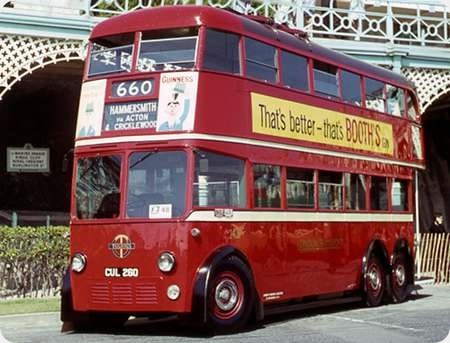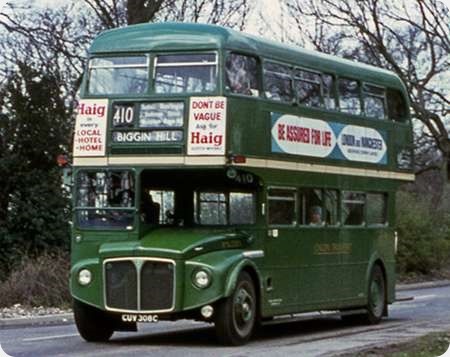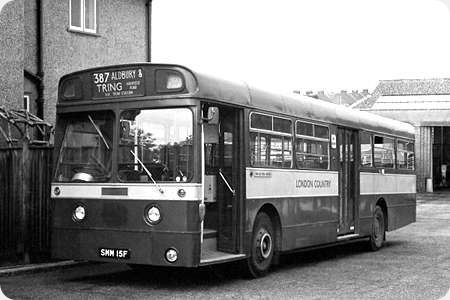London Transport - AEC 664T - CUL 260 - 260
London Transport
1936
AEC 664T
Metro-Cammell H40/30R
This representative of London’s once extensive trolleybus system is a London Transport class C2 AEC
664T (chassis number 168) with a Metro-Cammell H40/30R body. The 664T chassis design was a close
relative of the six wheeled LT class Renown that the LPTB also operated in large numbers.
CUL 260,
fleet no. 260, arrived new on 2 July 1936, reputedly costing the sum of £2,286.3s.8d., and operated for
its entire life out of Stonebridge Park depot (previously a tram ‘shed’) until its withdrawal on 27
August 1959. It was originally selected for preservation by London Transport, but then rejected in
favour of ‘All Leyland’ K2 type 1253, EXV 253, H40/30R, of 1938. Consequently, on 18 July 1962 CUL 260
was sold for scrap to the George Cohen 600 Group, but two enthusiasts, Tony Belton and Fred Ivey,
stepped in literally at the last minute as the trolley was being hitched to the Cohen’s tow wagon at
Clapham. They bought it, and arranged for its safe transport to secure premises elsewhere.
This
picture shows it being towed away from Clapham on 1 August 1962 over the John Rennie London Bridge of
1831, now ‘recreated’ in Arizona on a concrete substructure. www.flickr.com/photos/
Alfred Smith of Smith’s Coaches, Reading,
kindly allowed the storage of 260 at his Basingstoke Road depot for several years, and Tony Belton
acquired Smith’s Duple bodied Dennis Lancet III KJH 900 for use as a tow vehicle to take the trolleybus
about. Sadly, it seems that this Lancet no longer survives. In the heading photograph trolleybus 260 is
seen at Madeira Drive, Brighton on 1 May 1966, when it won the award for the best restoration of the
past year. Today 260 is resident at The East Anglia Transport Museum, Carlton Colville, Lowestoft.
Photograph and Copy contributed by Roger Cox
19/12/19 - 05:43
If any of the so called Experts of the period are still alive, I wonder if they now regret telling Trollybus operators to get rid of them?
Ronnie Hoye
20/12/19 - 06:33
I recall you and I (and others) covering this subject, Ronnie, in another
post, in 2012 no less!
Link is: //www.old-bus-photos.co.uk/?p=14275
Chris Hebbron
28/12/19 - 06:14
I remember the London trolleybus being towed to Brighton in respect of the 1966 HCVC (now HCVS) London to Brighton Run.I recall the following year, two preserved trolleybuses were towed to Brighton for the run namely a Brighton one & a then newly restored Derby Corporation utility (both four wheelers). Sadly I do not think since 1967 a trolleybus has taken part in the annual Brighton run, I would love to be proved wrong with my statement!
Andrew Spriggs
11/02/20 - 07:01
My friend’s Dad was in the City of London Police, and he was told that the
reason trolleybuses had to go from London was if there was a nuclear attack, diesel buses could
disperse people much further because they weren’t restricted to the overhead wires.
I bid the
last trolleybus a tearful goodbye at Isleworth depot when London’s final trolley routes were
closed.
Steve Bacon
11/02/20 - 13:34
I have never been a Londoner, and therefore don’t have a good grasp of the route system (present and ever-changing, or historical) but even to me, Hammersmith via Acton & Cricklewood (in that order) sounds geographically strange. Shouldn’t it be Hammersmith via Cricklewood (first) and Acton (second)? I could understand it with separate destination and routing blinds, but this is all on one display. Or is this another bit of esoteric London Transport lore to confuse us provincial types?!
Stephen Ford
15/02/20 - 06:28
Trolleybus route 660 ran from North Finchley via Finchley, Golders Green, Childs Hill, Cricklewood, Willesden Green, Craven Park Junction, Harlesden, Acton Vale and Ravenscourt Park to Hammersmith (and back again!) My high mileage memory, though not yet an MOT failure, has been rewardingly refreshed by the following site:- www.angelfire.com/
Roger Cox
Quick links to the - Comments Page - Contact Page - Home Page



